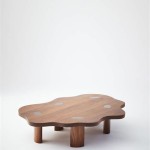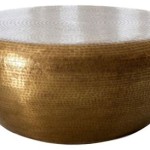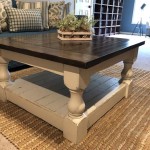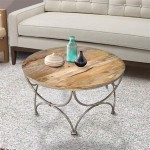A Guide To The Best Architecture Coffee Table Books 2024
Architecture embodies a confluence of art, engineering, and social history, captured in its designs, construction methods, and the stories behind its evolution. Coffee table books dedicated to architecture offer a tangible and visually stunning way to explore this complex field. These books not only serve as decorative elements within a living space but also provide a rich source of inspiration and knowledge for both professionals and enthusiasts. This guide aims to highlight some of the best architecture coffee table books available in 2024, focusing on their content, visual appeal, and overall value as resources for understanding and appreciating the built environment.
Selecting the "best" architecture coffee table book is inherently subjective and depends heavily on individual interests. Some readers may be drawn to books focusing on specific architectural styles, such as modernism or brutalism. Others might prefer volumes dedicated to the work of particular architects, like Frank Lloyd Wright or Zaha Hadid. Still others might be interested in regional architecture or books that explore the relationship between architecture and society. This guide will cover a range of categories and titles to offer a diverse selection that caters to different tastes and areas of focus.
Key Considerations When Choosing an Architecture Coffee Table Book
Before delving into specific titles, it is important to consider several key factors that contribute to the overall quality and suitability of an architecture coffee table book. These considerations encompass the content accuracy, the quality of visual presentation, and the overall design and production value of the book itself.
Content Accuracy: The information presented in an architecture book should be thoroughly researched and accurate. Authoritative sources and credible scholarship are essential, particularly when dealing with historical or theoretical aspects. The book should offer a nuanced understanding of the architectural works being presented, avoiding superficial descriptions or unsubstantiated claims. Look for books authored by established architectural historians, critics, or practicing architects with a proven track record.
Visual Presentation: Architecture is a visual art form, and the quality of photographs and illustrations is paramount. High-resolution images that capture the details and essence of the buildings are essential. The photography should showcase the buildings from various angles, including interior and exterior views, as well as close-ups of significant architectural elements. Consideration should also be given to the printing quality and paper stock, as these factors significantly impact the visual impact of the images. Books that include architectural drawings, plans, and sections offer a more comprehensive understanding of the design process.
Design and Production Value: The physical construction of the book itself contributes to its overall appeal and longevity. A well-bound book with high-quality materials will withstand repeated handling and remain a cherished possession for years to come. The layout and typography should be clear and legible, enhancing the reading experience. The overall design should complement the content, creating a cohesive and aesthetically pleasing object. Consider the size and weight of the book, as these factors will influence its placement and usability as a coffee table book.
Spotlight on Notable Titles
The following books represent a selection of notable titles within the architecture coffee table book genre. These books have been chosen for their compelling content, exceptional visual presentation, and overall contribution to the understanding and appreciation of architecture. They span various periods, styles, and geographical regions, offering a diverse range of perspectives on the built environment.
"Atlas of Brutalist Architecture Phaidon": This comprehensive atlas documents over 850 brutalist buildings across the globe, showcasing the raw concrete and monumental forms that characterize this architectural style. The book features stunning photography and detailed descriptions of each building, providing a comprehensive overview of brutalism's history and legacy. It's a valuable resource for anyone interested in understanding this often-misunderstood architectural movement. The geographical scope of the book is especially impressive, featuring examples from Eastern Europe, South America and Asia as well as the more commonly documented brutalist buildings in Western Europe and North America.
"Frank Lloyd Wright: The Houses": This book offers an intimate look at some of Frank Lloyd Wright's most iconic residential designs. Featuring detailed photographs and drawings, it explores the principles of organic architecture that Wright championed and the ways in which his houses are integrated with their natural surroundings. The book covers a wide range of Wright's residential work, from the early prairie houses to his later Usonian designs. It is an invaluable resource for anyone interested in Wright's architectural philosophy and the evolution of his residential designs.
"Mid-Century Modern Architecture Travel Guide: West Coast USA": This travel guide focuses specifically on notable mid-century modern architecture in the western United States. This book caters more to niche architecture enthusiasts with its highly regional focus. The book combines beautiful photography with practical travel information, making it an ideal companion for anyone planning a road trip to explore the iconic buildings of this era. It features detailed descriptions of each building, along with information on their history, significance, and accessibility. The book also includes maps and itineraries, making it easy to plan a self-guided tour of the West Coast's mid-century modern gems.
"Living in Nature: Contemporary Houses in the Natural World": This book explores the growing trend of contemporary houses designed in harmony with nature. It showcases a selection of innovative and aesthetically pleasing homes that seamlessly integrate with their natural surroundings, blurring the lines between indoor and outdoor spaces. The book features stunning photography and detailed descriptions of each house, highlighting the sustainable design principles and innovative building techniques employed. It is a source of inspiration for anyone interested in eco-friendly architecture and the potential for creating homes that are both beautiful and environmentally responsible.
"The Phaidon Architecture Travel Guide": This comprehensive guide provides information on over 2,300 buildings worldwide, spanning a wide range of architectural styles and periods. It serves as a valuable resource for both travelers and armchair enthusiasts, offering concise descriptions and location information for each building. The book is organized geographically, making it easy to find buildings in specific regions or cities. While it lacks the detailed photography of some of the other books on this list, its breadth of coverage makes it an indispensable reference for anyone interested in exploring the world's architectural heritage.
"100 Contemporary Houses": Assembled by TASCHEN, this book provides a global overview of modern residential architecture. The book presents a curation of homes that are not only places to live but also unique expressions of design and personal style. Each house is accompanied by photographs, plans, and descriptive text that explains the architectural concepts and design elements that define it. The selection of houses is varied, ranging from minimalist studios to expansive villas, and shows how contemporary architects are redefining the concept of home in response to modern living.
"Never Built Los Angeles": This book offers a glimpse into a parallel architectural universe, exploring the ambitious and often fantastical projects that were proposed but never realized in Los Angeles. The book features detailed renderings and descriptions of these unbuilt projects, showcasing the visionary ideas and unrealized potential of some of the city's most innovative architects. From grand public spaces to futuristic transportation systems, the book provides a fascinating insight into the urban planning and architectural history of Los Angeles. It is a testament to the power of imagination and the enduring legacy of unbuilt dreams.
Architectural Styles and Movements: Tailoring Your Choice
Choosing a coffee table book that aligns with personal architectural preferences can significantly enhance enjoyment and engagement. Different titles focus on specific movements, offering in-depth explorations of their defining characteristics and key practitioners.
Modernism: Characterized by clean lines, functional design, and a rejection of ornamentation, modernism remains a dominant influence in contemporary architecture. Books focusing on modernism showcase the work of pioneers such as Le Corbusier, Mies van der Rohe, and Walter Gropius, exploring their contributions to the development of this influential style. Look for books that delve into the social and political context of modernism, examining its utopian ideals and its impact on urban planning and social housing.
Brutalism: Often controversial but undeniably impactful, brutalism is characterized by its use of raw concrete, monolithic forms, and functional expression. Books on brutalism often feature striking photography of iconic brutalist buildings, highlighting their imposing scale and textured surfaces. These books often address the criticisms leveled against brutalism, exploring its social and aesthetic value and examining its legacy in contemporary architecture.
Postmodernism: A reaction against the perceived sterility of modernism, postmodernism embraces eclecticism, ornamentation, and historical references. Books on postmodernism showcase the work of architects such as Robert Venturi, Michael Graves, and Philip Johnson, exploring their playful and often provocative designs. These books often delve into the theoretical underpinnings of postmodernism, examining its critique of modernist ideology and its embrace of popular culture.
Sustainable Architecture: With growing concerns about climate change and environmental sustainability, books on sustainable architecture showcase innovative designs that minimize environmental impact. These books often feature examples of green building technologies, passive solar design, and the use of renewable resources. They highlight the potential for creating buildings that are both aesthetically pleasing and environmentally responsible.
Ultimately, the selection of an architecture coffee table book is a personal decision based on individual preferences and interests. By considering the key factors outlined in this guide and exploring the diverse range of titles available, readers can find books that inspire, inform, and enrich their understanding and appreciation of the built environment.

Ultimate Guide To The Best Coffee Table Books For Interior Design On Our Wandering Mind

Architecture Interior Coffee Table Books By Gestalten Eu

33 Inspiring Design Books To Add Your Cart Now Architectural Digest

The Archdaily Guide To Good Architecture Now And How Of Built Environments Gestalten Eu

Architecture Interior Coffee Table Books By Gestalten Die Verlag Ltd

The Archdaily Guide To Good Architecture

3 Coffee Table Books On Gardens Npr

29 Design Books That Ad Editors Are Curling Up With For Fall Architectural Digest

Make Your Own Coffee Table Photo Book Cewe

The Archdaily Guide To Good Architecture
Related Posts








